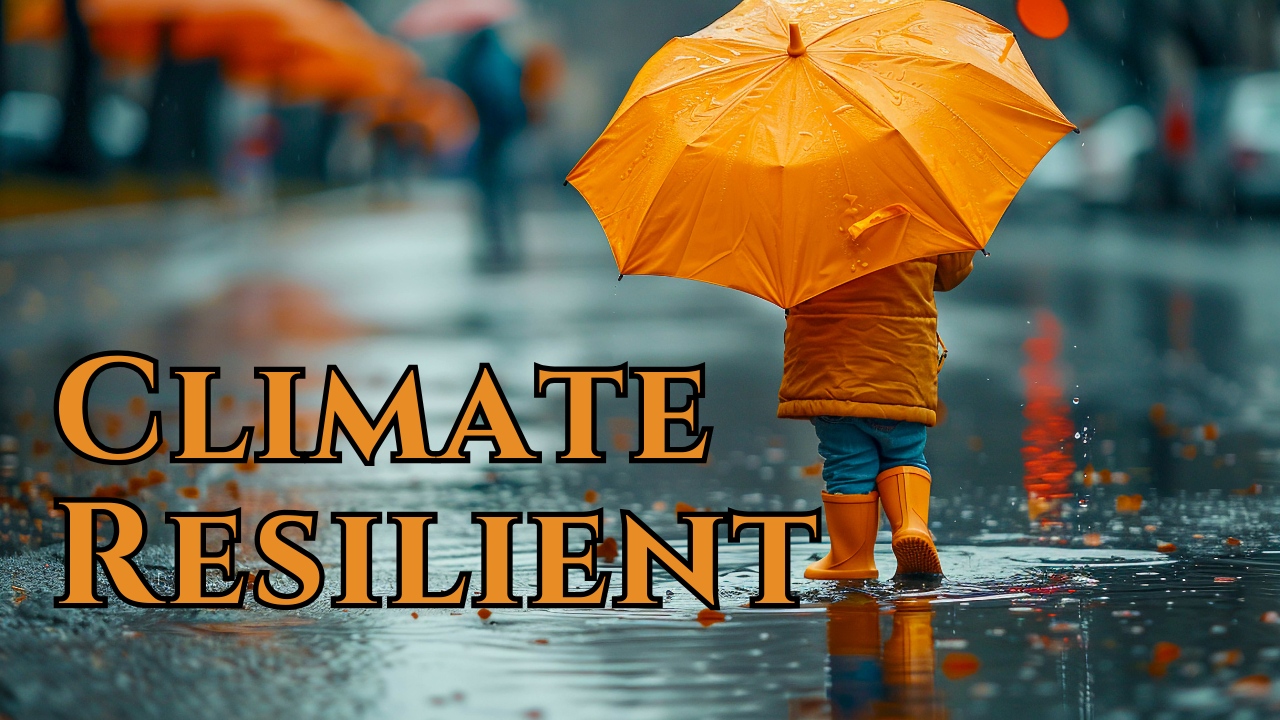Climate-Resilient Solutions for India’s Monsoon Challenges
Context:
The 2024 monsoon revealed significant flaws in India’s infrastructure and policies, highlighting how climate change is causing unpredictable rainfall patterns.
More on News:
The monsoon season in India is crucial for agriculture and water resources, but it also brings significant risks, such as flooding and landslides, that can endanger communities.
The Impact of Monsoon on India:
- The monsoon season accounts for nearly 70% of India’s annual rainfall, making it vital for agriculture, water supply, and livelihoods.
- However, the unpredictable and often extreme nature of monsoon rains can turn this blessing into a disaster, especially in areas with inadequate infrastructure and planning.
- In 2023, over 1,400 deaths were attributed to monsoon-related disasters, with states like Himachal Pradesh, Kerala, Karnataka, Andhra Pradesh, Maharashtra, Gujarat and Assam facing severe flooding and landslides.
- The increasing fatalities, such as the tragic Wayanad landslide, underscore the urgent need for comprehensive monsoon management strategies.
Factors Exacerbating Monsoon Vulnerabilities:
- Climate Change: Rising global temperatures are altering rainfall patterns, making monsoons more erratic and intense.
- Deforestation: The loss of forest cover reduces the land’s ability to absorb rainwater, leading to increased runoff and flooding.
- Unplanned Urbanisation: Rapid and unplanned urban growth has led to the loss of natural drainage systems and wetlands, exacerbating waterlogging and flooding.
- Outdated Infrastructure: Many urban drainage systems, like Mumbai’s, were built during colonial times and are not equipped to handle the current intensity of rainfall.
Addressing Urban Flooding in India
- Urban centres in India, like Mumbai, Delhi, and Bengaluru, are especially vulnerable to severe waterlogging and flooding during the monsoon season.
- In 2023, Delhi faced large-scale evacuations due to the overflowing Yamuna River, revealing the shortcomings of outdated infrastructure.
- Mumbai’s drainage system, designed for 25 mm of rainfall per hour, has struggled with rates exceeding 50 mm, causing widespread flooding.
- Similarly, Chennai’s 2023 floods were worsened by the loss of natural drainage due to unplanned urbanisation, leading to inadequate flood defences.
- Waste management exacerbates these issues, as uncollected garbage clogs drain, resulting in flooding and health hazards from stagnant water.
Recommendations for Sustainable Monsoon Management:
- Modernising Urban Drainage Systems: Upgrading drainage systems to handle increased rainfall volumes is crucial.
- Implementing Sustainable Urban Drainage Systems: These systems mimic natural processes to manage surface water, alleviating pressure on existing infrastructure.
- Protecting Natural Water Bodies: Restoring wetlands and natural drainage channels is essential for effective water management and flood mitigation.
- Strengthening Disaster Management Systems: The NDMA’s guidelines must be fully implemented at state and local levels, supported by improved early warning systems and better coordination among agencies.
- Community Preparedness: Regular flood drills and community awareness programs are vital for preparing populations for monsoon-related disasters.
- Climate Adaptation Strategies: Developing comprehensive strategies that include climate-resilient infrastructure and revised building codes for future climate scenarios is essential.
- Public Awareness and Participation: Engaging local communities in disaster preparedness and management can significantly enhance the effectiveness of government measures.
Conclusion:
India’s struggle with monsoon management is complex, but with the right investments, policy reforms, and a commitment to building climate resilience, the country can transform its approach to managing monsoon risks. The urgency of addressing these challenges cannot be overstated, as the risks of inaction grow with each passing season.
Subscribe to our Youtube Channel for more Valuable Content – TheStudyias
Download the App to Subscribe to our Courses – Thestudyias
The Source’s Authority and Ownership of the Article is Claimed By THE STUDY IAS BY MANIKANT SINGH





